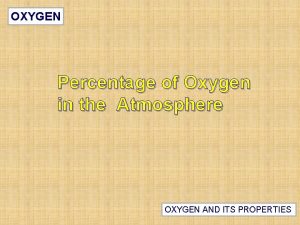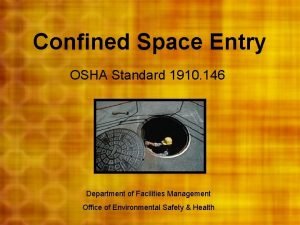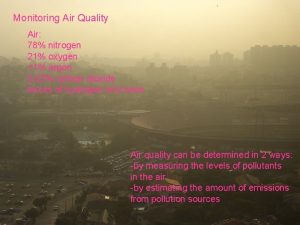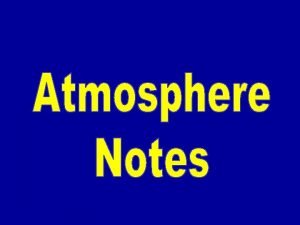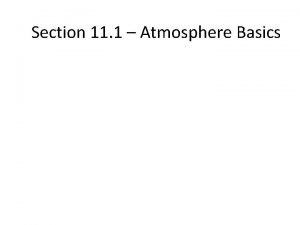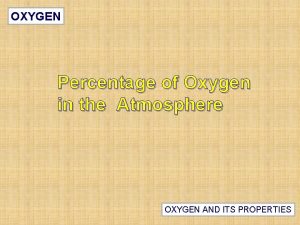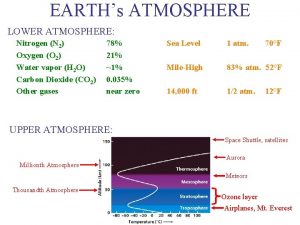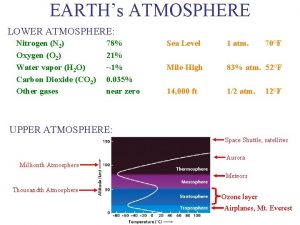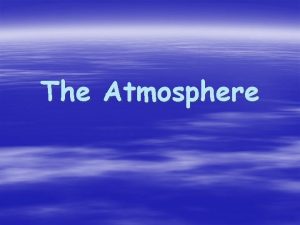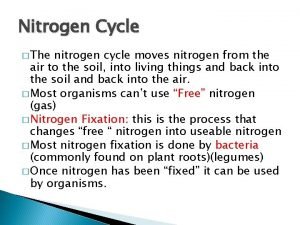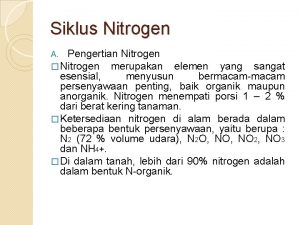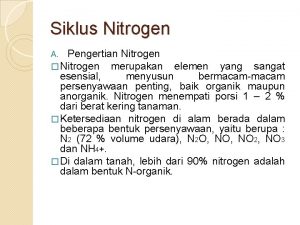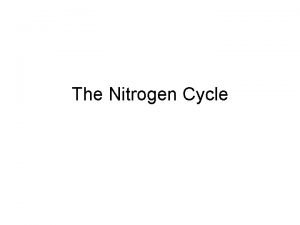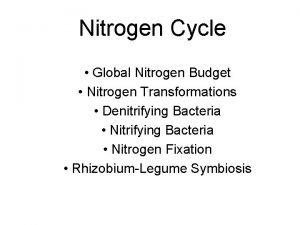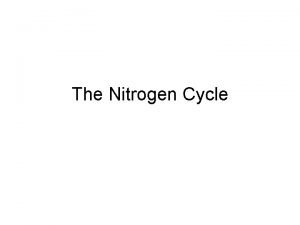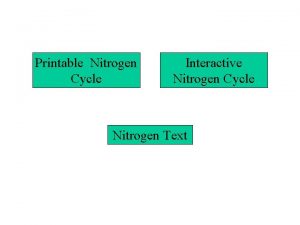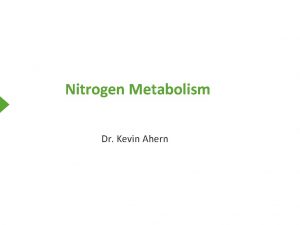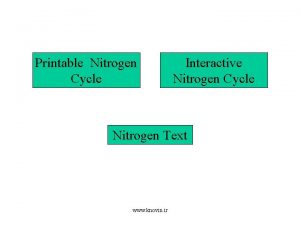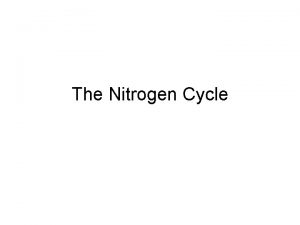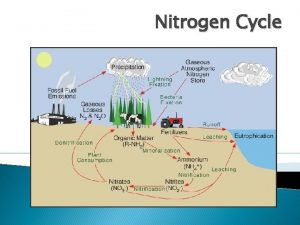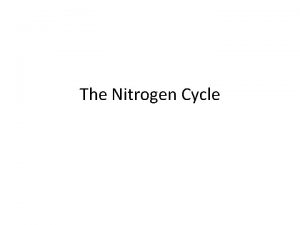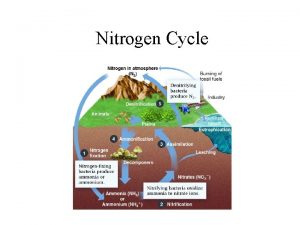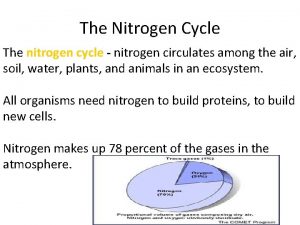Gases of the Atmosphere Nitrogen 78 Oxygen 21
































- Slides: 32


Gases of the Atmosphere • Nitrogen 78% • Oxygen 21% • The remaining 1% is trace amounts of – Argon, Neon, Hydrogen, Carbon Dioxide, (water) H 20


The Atmosphere • The amount of nitrogen and oxygen need to stay fixed, or relatively stable humans couldn’t survive. • The amount of water vapor is constantly changing…(one reason we have weather!) • There are 4 main layers to the atmosphere: • 1. Troposphere (we live here, weather occurs) • 2. Stratosphere (ozone is here) • 3. Mesosphere (rocks from space burn up) • 4. Thermosphere

Pressure and Density Decrease with ALTITUDE

Page 14 of ESRT

Remember air actually expands as it rises due to a decrease in air [pressure

Pressure and Density Decrease with ALTITUDE

Remember air actually expands as it rises due to a decrease in air [pressure

What layer of our atmosphere is all this happening in? ? ?

Which weighs more?

Below is the masses for 22 litres of each molecule of air… Water vapor replaces other air molecules that are heavier


The Atmosphere Vocabulary

• Atmosphere a mixture of gases that surrounds Earth. • 78% Nitrogen • 21% Oxygen • 1% other gases (like carbon dioxide, water vapor, argon, etc. )

• Air Pressure is the measure of the force of air molecules. It can be considered the weight of air. It is measured using a barometer.

Altitude is the height above the surface of Earth. As altitude increases, air pressure decreases (that’s why your ears pop as you go up in an airplane).

• Radiation is the transfer of energy by electromagnetic waves. It CAN travel through the vacuum of space. It is how the sun’s energy gets to Earth.

• Conduction the transfer of thermal energy by direct contact, i. e. heating by touching.

• Convection the transfer of thermal energy by circulation in a fluid, i. e. moving a liquid or gas.

• Convection currents in the atmosphere move heat from the equator to the poles.

• You absolutely, • POSITIVELY, » MUST, must, MUST » understand the » next vocab words.

• The Greenhouse Effect is the natural process which heats Earth’s atmosphere. Gases such as carbon dioxide, water vapor, and methane, trap heat like the glass of a greenhouse. • Without the greenhouse effect, Earth would be too cold to live on.

• Global Warming is caused by too much greenhouse gas. An increase in the amount of greenhouse gases, such as carbon dioxide and methane, is causing the atmosphere to hold more heat than it naturally would. This is causing an increase in global temperature. • This is now referred to as Climate Change.

• Wind is moving air. • It is cause by the differences in air pressure, which is caused by the uneven heating of Earth. • Wind blows from high pressure to low pressure. • The greater the difference in pressure, the stronger the wind. • It is always labeled by where it come from.

• Westerlies are winds that blow from the WEST. • Most of the United States is in the Westerlies.

Wind Belts in the ESRT: Polar Easterlies Mid-Latitude Westerlies Easterly “Trade Winds”


Triangular Trade during Colonization was an unfortunate outcome of the prevailing winds…

• Jet Streams are narrow bands of high speed winds that blow in the upper troposphere. • They can move weather systems very fast across the U. S. or stall a weather system over a particular area.


 How do olive trees pollinate
How do olive trees pollinate Nitrification is indicated by the letter(s) _____.
Nitrification is indicated by the letter(s) _____. Percent of oxygen in the atmosphere
Percent of oxygen in the atmosphere Osha oxygen enriched atmosphere
Osha oxygen enriched atmosphere 78 nitrogen
78 nitrogen Nitrogen 78 oxygen 21
Nitrogen 78 oxygen 21 Atmosphere is a mixture of gases
Atmosphere is a mixture of gases Gases on earth's atmosphere
Gases on earth's atmosphere Tư thế ngồi viết
Tư thế ngồi viết Voi kéo gỗ như thế nào
Voi kéo gỗ như thế nào Thẻ vin
Thẻ vin Thể thơ truyền thống
Thể thơ truyền thống Các châu lục và đại dương trên thế giới
Các châu lục và đại dương trên thế giới Từ ngữ thể hiện lòng nhân hậu
Từ ngữ thể hiện lòng nhân hậu Diễn thế sinh thái là
Diễn thế sinh thái là Slidetodoc
Slidetodoc Thế nào là giọng cùng tên? *
Thế nào là giọng cùng tên? * Vẽ hình chiếu vuông góc của vật thể sau
Vẽ hình chiếu vuông góc của vật thể sau 101012 bằng
101012 bằng Sự nuôi và dạy con của hươu
Sự nuôi và dạy con của hươu Lời thề hippocrates
Lời thề hippocrates Glasgow thang điểm
Glasgow thang điểm đại từ thay thế
đại từ thay thế Quá trình desamine hóa có thể tạo ra
Quá trình desamine hóa có thể tạo ra Công thức tính độ biến thiên đông lượng
Công thức tính độ biến thiên đông lượng Thế nào là mạng điện lắp đặt kiểu nổi
Thế nào là mạng điện lắp đặt kiểu nổi Dạng đột biến một nhiễm là
Dạng đột biến một nhiễm là Bổ thể
Bổ thể Vẽ hình chiếu đứng bằng cạnh của vật thể
Vẽ hình chiếu đứng bằng cạnh của vật thể Biện pháp chống mỏi cơ
Biện pháp chống mỏi cơ Phản ứng thế ankan
Phản ứng thế ankan Môn thể thao bắt đầu bằng từ chạy
Môn thể thao bắt đầu bằng từ chạy Sự nuôi và dạy con của hổ
Sự nuôi và dạy con của hổ


